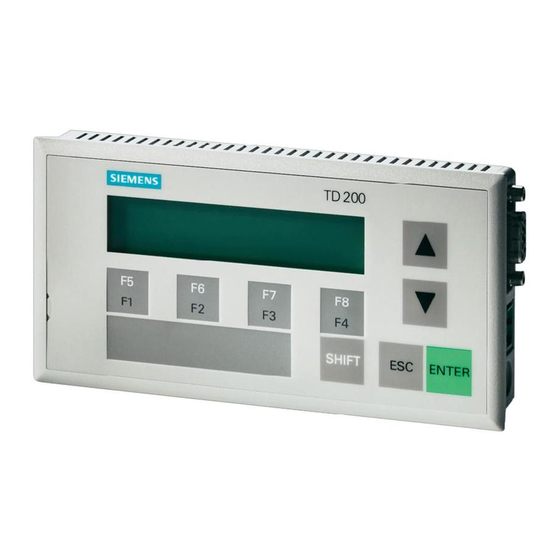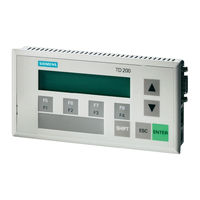
Siemens SIMATIC TD 200 Manuals
Manuals and User Guides for Siemens SIMATIC TD 200. We have 2 Siemens SIMATIC TD 200 manuals available for free PDF download: User Manual
Siemens SIMATIC TD 200 User Manual (106 pages)
Operator Interface
Brand: Siemens
|
Category: Recording Equipment
|
Size: 0.77 MB
Table of Contents
Advertisement
siemens SIMATIC TD 200 User Manual (132 pages)
Operator Interface
Brand: siemens
|
Category: Control Panel
|
Size: 1.23 MB
Table of Contents
Advertisement
Related Products
- Siemens SIMATIC Distributed I/O System DP/ASi Link
- Siemens SIMATIC KTP400 Basic
- Siemens SIMATIC KTP600 Basic
- Siemens SIMATIC KTP1000 Basic
- Siemens SIMATIC KTP1500 Basic
- Siemens SIMATIC HMI Mobile Panel 277 RO
- Siemens SIMATIC RTLS4040T
- Siemens SIMATIC NET CP 5613
- Siemens SIMATIC NET CP 5614
- Siemens SIMATIC NET DP/AS-i Link 20E

